A refrigerator can be laid on its side for up to 24 hours without causing significant damage. Laying a refrigerator on its side can be necessary during transportation or when moving houses.
However, it is important to note that you should only lay it on its side for a maximum of 24 hours to avoid potential issues. When a refrigerator is placed on its side for an extended period, the refrigerant oil may flow into the cooling tubes, which can result in compressor damage and potential leaks.
Additionally, laying a refrigerator on its side for a long time may negatively affect its overall performance and lifespan. Therefore, it is crucial to minimize the time your refrigerator spends on its side to ensure its optimal functioning and longevity.
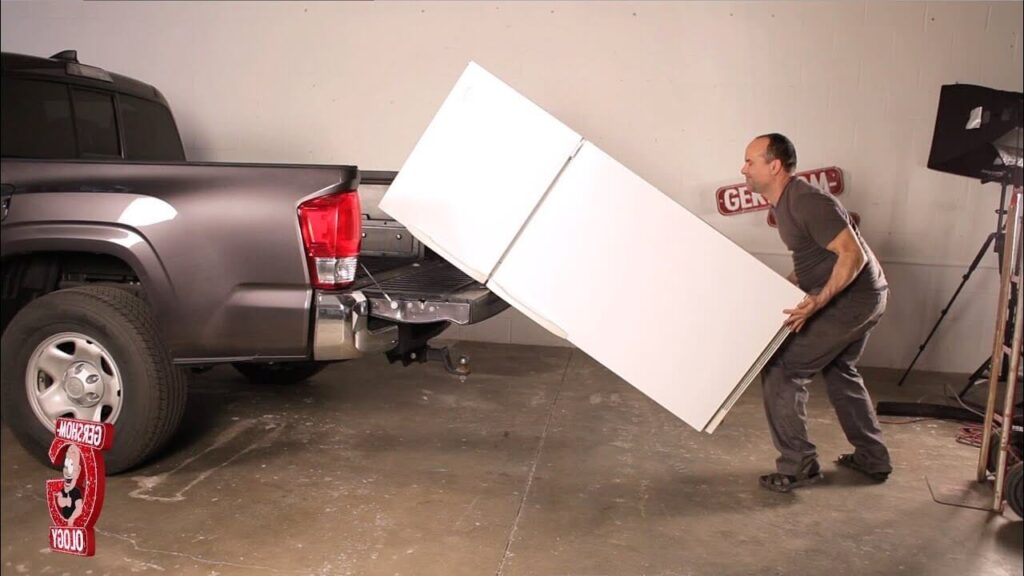
The Impact Of Laying A Refrigerator On Its Side
Laying a refrigerator on its side can have a significant impact on its functionality and lifespan. Ideally, it should only be laid horizontally for a maximum of 24 hours to prevent potential damage to the compressor and cooling system.
Have you ever wondered if it’s safe to lay a refrigerator on its side? In this section, we’ll explore the potential risks and damages associated with this practice.
We will also discuss the factors that can affect the impact of laying a refrigerator on its side, including refrigerant leakage and compressor damage, oil circulation, and compressor functionality, as well as cooling system efficiency and performance.

Potential Risks And Damages To The Refrigerator Components:
- Misalignment of internal components: Laying a refrigerator on its side can cause the internal components to shift or become misaligned. This can affect the overall performance and functionality of the appliance.
- Damage to the door seals: When a refrigerator is placed on its side, there is a risk of damaging the door seals. This can lead to air leaks, reducing the appliance’s energy efficiency and causing temperature fluctuations.
- Water leakage: Some refrigerators have a drain pan that can hold condensation or defrost water. Laying the refrigerator on its side may cause this water to spill, potentially damaging the surrounding area or other electronics.
- Cracked coolant lines: The coolant lines in a refrigerator are crucial for maintaining its cooling function. When a refrigerator is laid on its side, there is a risk of these lines cracking or developing leaks, which can result in reduced cooling efficiency.
Factors Affecting The Impact Of Laying A Refrigerator On Its Side:
- Duration of the sideways position: The longer a refrigerator remains on its side, the greater the risk of damage. It is recommended to keep the refrigerator in an upright position as much as possible.
- Type of refrigerator: Different refrigerator models are built differently, and their components may have varying levels of sensitivity to being laid on their side. It is essential to refer to the manufacturer’s guidelines for specific instructions.
- Transportation method: The impact on the refrigerator may vary depending on how it is transported. For example, a refrigerator moved gently on a soft surface may experience fewer risks than one subjected to rough handling.
Refrigerant Leakage And Compressor Damage:
- Refrigerant leakage: Laying a refrigerator on its side can cause the refrigerant to flow backward into the system, potentially leading to leaks. Refrigerant leaks not only affect the cooling efficiency but also pose environmental risks due to their harmful effects.
- Compressor damage: The compressor is a vital component of a refrigerator, responsible for pumping refrigerant throughout the system. When a refrigerator is laid on its side, the compressor may experience strain or damage, affecting its functionality and potentially leading to costly repairs or replacement.

Oil Circulation And Compressor Functionality:
- Oil circulation: In an upright refrigerator, oil circulates within the compressor to lubricate its moving parts. When a refrigerator is laid on its side, the oil may migrate to other areas or fail to reach the necessary components, resulting in inadequate lubrication and potential damage.
- Compressor functionality: As the heart of the cooling system, the compressor works most effectively in an upright position. Laying a refrigerator on its side can adversely affect compressor functionality, leading to decreased cooling efficiency and potential system failure.
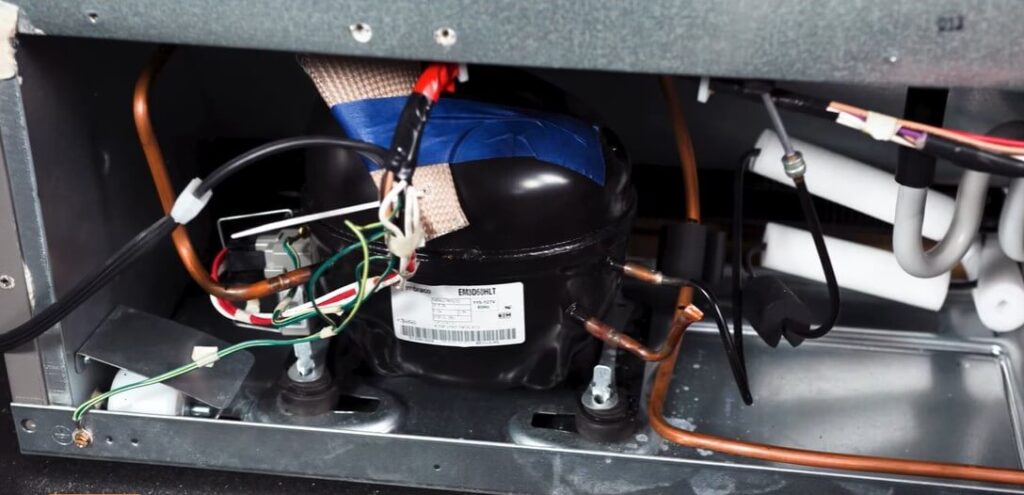
Cooling System Efficiency And Performance:
- Impeded heat exchange: When a refrigerator is laid on its side, there is a risk of the cooling system’s heat exchange elements becoming obstructed or compromised. This interference can result in diminished cooling efficiency and improper temperature regulation, affecting the freshness and longevity of stored food.
- Increased energy consumption: A refrigerator struggling to cool properly due to being laid on its side may consume more energy to maintain the desired temperature. This inefficiency can result in higher electricity bills and environmental impact.
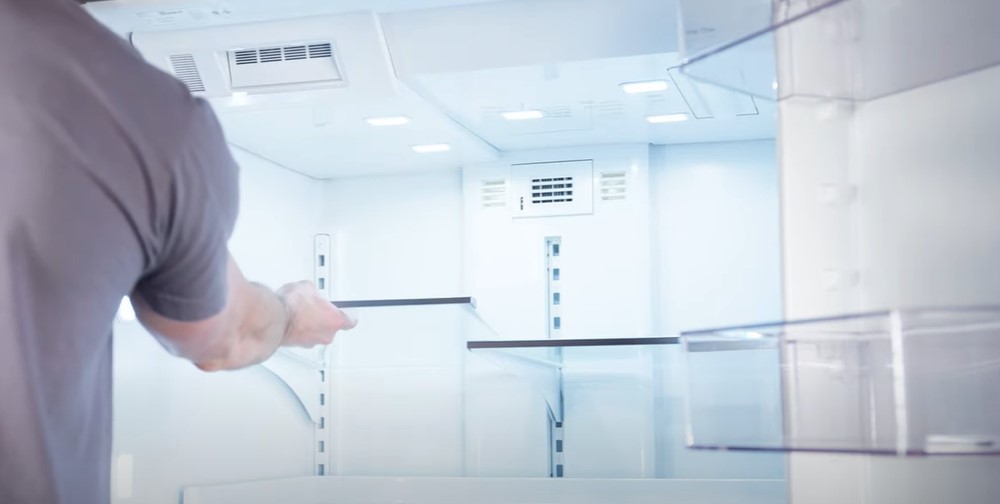
By understanding the potential risks and damages associated with laying a refrigerator on its side, you can take precautions to protect your appliance and ensure its longevity. Remember to consult the manufacturer’s guidelines and handle your refrigerator with care during transportation or relocation.
Recommended Time Limits For Laying A Refrigerator On Its Side
Laying a refrigerator on its side is generally not recommended for more than 24 hours, as it can potentially damage the cooling system. It is best to keep the refrigerator upright during transportation and installation to ensure optimal performance.
Many of us have wondered how long we can safely lay a refrigerator on its side without causing any damage. Whether you’re moving or need to transport your refrigerator, understanding the recommended time limits for laying it on its side is crucial to prevent any potential issues.
In this section, we’ll explore the time limits based on manufacturer guidelines and specifications, as well as average recommendations for different types of refrigerators.
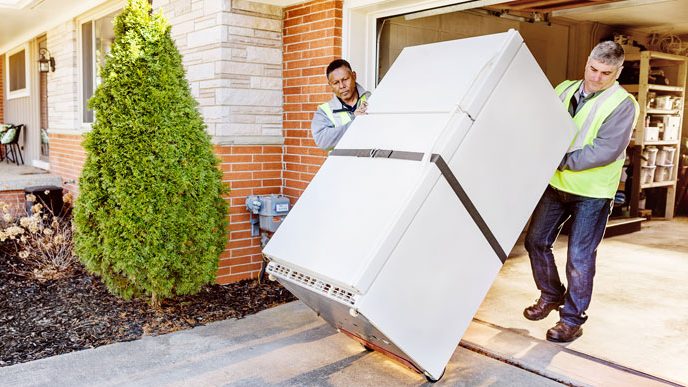
Manufacturer Guidelines And Specifications:
- Manufacturers typically provide specific guidelines and specifications for their refrigerators. It’s essential to refer to the user manual or contact the manufacturer directly to obtain accurate information regarding the recommended time limits for laying your specific refrigerator on its side.
Average Recommended Time Limits For Different Refrigerator Types:
When it comes to laying refrigerators on their side, different refrigerator types may have varying recommended time limits based on their construction and design. Let’s explore the average recommendations for common refrigerator types:
| Type | Average Recommended Time Limit | Explanation |
|---|---|---|
| Top-freezer refrigerators | 1-2 hours | Top-freezer refrigerators generally have a simpler design compared to other types. Their cooling systems are often located on top, making them less sensitive to being laid on their side. However, it’s still advisable to keep the laying time within 1-2 hours to minimize any potential damage. |
| Bottom-freezer refrigerators | 2-4 hours | Bottom-freezer refrigerators feature the freezer compartment at the bottom, with a more complex cooling system compared to top-freezer models. Due to this design, laying them on its side for an extended period may impact the cooling system’s functionality. It’s recommended to limit the laying time to 2-4 hours. |
| Side-by-side refrigerators | 4-6 hours | Side-by-side refrigerators have a vertical design with the freezer compartment and refrigerator compartment placed next to each other. The cooling systems in these models can be more intricate. To avoid any potential issues, it is advisable to limit the laying time to 4-6 hours for side-by-side refrigerators. |
| French door refrigerators | 4-6 hours | French door refrigerators are known for their elegance and flexibility. Similar to side-by-side models, the cooling systems in french door refrigerators can be complex. To ensure the optimal functioning of the refrigerator, it’s recommended to keep the laying time within 4-6 hours. |
Remember, these time limits are general recommendations based on common refrigerator types. Always refer to the manufacturer’s guidelines and specifications for your specific refrigerator model to ensure you stay within the safe laying time limits.
With these recommended time limits in mind, you can now move or transport your refrigerator with confidence, knowing you’re taking the necessary precautions to avoid any potential damage.
Preparing And Laying A Refrigerator On Its Side
Preparing and laying a refrigerator on its side for an extended period can cause damage to the appliance. To avoid potential issues, it is recommended to keep a refrigerator upright for at least 24 hours before plugging it in to allow the refrigerant to settle.
Ensuring Safety During Transportation And Handling:
When preparing to lay a refrigerator on its side, safety should be your top priority. Here are some guidelines to follow:
- Ensure you have a clear path and enough space to maneuver the refrigerator without causing damage to yourself or the appliance.
- Use proper lifting techniques and, if needed, ask for assistance to avoid strain or injuries.
- Wear protective gloves to safeguard your hands from any sharp edges or potential hazards.
- Keep children and pets away from the area to prevent accidents or injuries.
Properly Securing And Protecting The Refrigerator:
To prevent any damage during transportation, it is essential to secure and protect the refrigerator properly. Consider the following steps:
- Wrap the refrigerator in sturdy blankets or bubble wrap to provide cushioning and protection against bumps and impacts.
- Use packing straps or bungee cords to secure the refrigerator in an upright position to minimize movement during transport.
- If the refrigerator cannot be transported in an upright position, ensure it is adequately secured on its side to prevent it from tipping or shifting.
Steps To Follow When Laying A Refrigerator On Its Side:
Laying a refrigerator on its side requires careful steps to maintain its functionality and prevent any potential damage. Follow these guidelines:
- Start by unplugging the refrigerator from the power source to avoid electrical hazards.
- Ensure the refrigerator is completely empty, removing all food items and shelves.
- Defrost the freezer compartment and drain any excess water to prevent leaks or water damage.
- Secure loose parts such as shelves, drawers, or doors with tape or zip ties to prevent them from moving or getting damaged during transportation.
- Place the refrigerator on its side gently, making sure it is stable and won’t tip over.
Emptying And Defrosting The Refrigerator:
Before laying a refrigerator on its side, it is crucial to empty and defrost it properly. Here are the recommended steps:
- Remove all food items, perishables, and condiments from the refrigerator and freezer compartments.
- Discard any expired or spoiled items to avoid unpleasant odors and potential contamination.
- For defrosting, turn off the refrigerator and leave the freezer door open to allow the ice to melt naturally. Alternatively, you can use a towel to soak up excess moisture.
- Once defrosted, thoroughly clean the interior of the refrigerator to remove any remaining moisture or residue.
Disconnecting And Securing Loose Parts:
Before transporting a refrigerator on its side, it is necessary to disconnect and secure loose parts to prevent damage. Take these precautions:
- Unplug the refrigerator from the power source to avoid electrical hazards.
- Ensure all shelves, drawers, and removable components are securely fastened or removed.
- Use tape or zip ties to secure loose parts, ensuring they won’t shift or get damaged during transportation.
Maintaining The Correct Orientation And Angle:
While laying a refrigerator on its side, maintaining the correct orientation and angle is crucial. Follow these recommendations:
- Keep the refrigerator in an upright position as much as possible during transportation to minimize the risk of damage.
- If laying it on its side is unavoidable, ensure the top side is facing upward to prevent oil from the compressor from flowing into other parts of the appliance.
- Maintain a steady and controlled angle when tilting the refrigerator.
Safely Moving And Repositioning The Refrigerator:
Moving and repositioning a refrigerator after laying it on its side requires caution and proper handling. Here’s what you need to do:
- When moving the refrigerator, avoid sudden jerks or impacts that could damage internal components.
- Ensure the path is clear and free from hazards or obstacles to prevent accidents or injuries.
- Use a dolly or hand truck for easier transportation, making sure to secure the refrigerator properly to avoid tipping or sliding.
- Position the refrigerator carefully in its new location, ensuring it is stable and level before plugging it back in.
Now that you’re aware of the necessary steps to prepare and lay a refrigerator on its side, you can handle the process safely and protect your appliance from potential damage.

Tips For Minimizing Damage And Maximizing Efficiency
When moving a refrigerator, it is important to avoid laying it on its side for an extended period. This can minimize potential damage and maximize its efficiency.
Positioning The Refrigerator Correctly After Laying It On Its Side:
- Place the refrigerator in an upright position before plugging it in again, as this is crucial for its proper functioning.
- Ensure that the refrigerator is stable and level on the floor to prevent any issues.
- Avoid positioning the refrigerator near heat sources, such as direct sunlight, ovens, or radiators.
- Provide sufficient clearance around the refrigerator for proper air circulation.
Allowing Sufficient Time For The Refrigerant And Oil To Settle:
- After laying the refrigerator on its side, give it ample time for the refrigerant and oil to settle, ideally at least 24 hours.
- This settling time allows the oil to flow back to its designated areas, preventing damage to the compressor.
- Rushing the process may lead to compressor failure and affect the refrigerator’s performance.
Conducting A Thorough Inspection Before Reconnecting The Refrigerator:
- Inspect all external and internal components for any visible damage or signs of leaks.
- Check the seals and gaskets to ensure they are intact and tight, preventing air leakage.
- Look for any disconnected or damaged wires or cords that may cause electrical issues.
- Clean the condenser coils as accumulated debris can impact the refrigerator’s efficiency.
Monitoring Performance And Seeking Professional Assistance If Needed:
- Once reconnected, closely monitor the refrigerator’s performance for any unusual noises, leaks, or temperature fluctuations.
- If you notice any issues, it is advisable to seek professional assistance to prevent further damage or potential breakdowns.
- Regularly clean and maintain the refrigerator, following the manufacturer’s guidelines.
- Regular maintenance and professional servicing can help maximize efficiency and extend the lifespan of your refrigerator.
Remember, correctly positioning the refrigerator, allowing sufficient settling time, performing a thorough inspection, and monitoring its performance are all essential steps in minimizing damage and maximizing efficiency.
By following these tips, you can ensure the optimal functioning of your refrigerator even after laying it on its side.
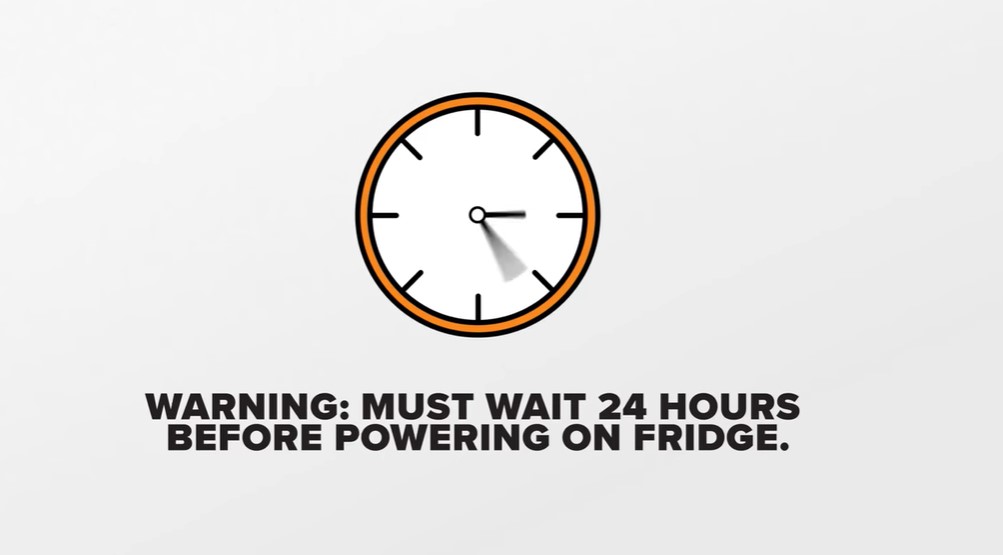
Frequently Asked Questions Of How Long Can You Lay A Refrigerator On Its Side
Is It Ok To Transport A Refrigerator Laying Down?
Yes, it is generally safe to transport a refrigerator laying down. However, you should ensure that the refrigerator remains upright as much as possible during transportation. This is because laying the refrigerator down for an extended period can cause the oil in the compressor to flow into the cooling lines, which can damage the appliance.
If you need to lay the refrigerator down temporarily, make sure it is well-secured and avoid tipping or shaking it. Additionally, before transportation, it is advisable to remove all loose parts, secure the doors with tape or straps, and protect the corners and surfaces to prevent any damage.
It’s also important to read the manufacturer’s instructions and follow any specific guidelines they provide for transporting your refrigerator safely.
How Long Can You Transport A Refrigerator Laying Down?
Transporting a refrigerator while laying down is not recommended. However, if necessary, you can transport it laying down for a maximum period of 24 hours. Please note that this may affect the refrigerator’s performance and could potentially harm the compressor.
When moving the refrigerator, make sure it remains in an upright position to prevent any damages. Remember to secure the refrigerator properly during transportation to avoid any accidents. It is important to consult the refrigerator manufacturer’s guidelines for specific instructions on transportation.
By following these guidelines, you can ensure a safe and damage-free transportation for your refrigerator.
How Long Should I Wait To Plug In My Fridge After Laying It Down?
After laying your fridge down, it’s best to wait for at least 24 hours before plugging it in. This allows the refrigerant inside to settle properly and prevents any damage to the compressor. Waiting ensures that the oil in the compressor returns to its original position, which helps the fridge run smoothly.
It’s important to remember that rushing this process can cause cooling issues and potential damage to the fridge. So, it’s worth being patient and giving it the required time for optimal functioning.
Can You Lay A Refrigerator On Its Side For Storage?
Yes, you can lay a refrigerator on its side for storage. However, it is recommended to keep it upright for at least 24 hours before turning it on to allow the refrigerant oil to settle. Be cautious not to tilt it excessively to avoid damaging any internal components.
Conclusion
Laying a refrigerator on its side for an extended period can have detrimental effects on its performance and lifespan. While it may be necessary to transport a refrigerator on its side for a short distance, it is essential to allow it to stand upright for at least 24 hours before plugging it in.
This allows the refrigeration system to settle and prevents potential damage to the compressor. Moreover, it’s worth noting that laying a refrigerator on its side for too long can lead to oil leakage, which can irreversibly damage the appliance.
To ensure the longevity and optimal functioning of your refrigerator, it is always best to consult the manufacturer’s guidelines for specific instructions on transporting and positioning.
By taking proper precautions and adhering to these guidelines, you can ensure that your refrigerator continues to cool your food efficiently for years to come.
